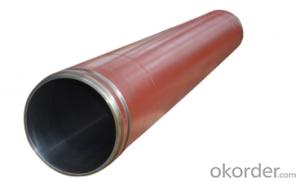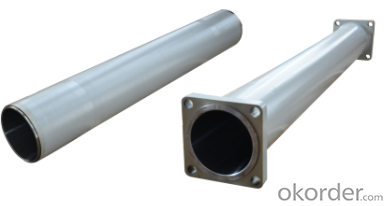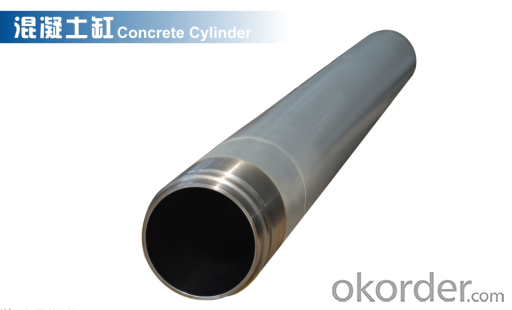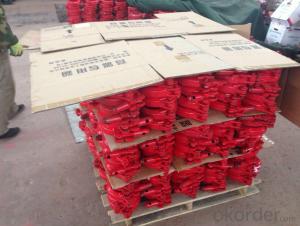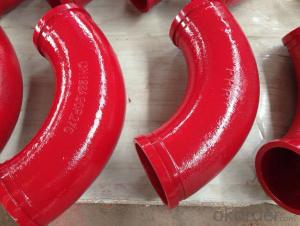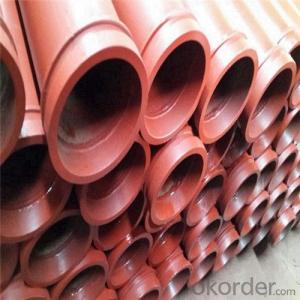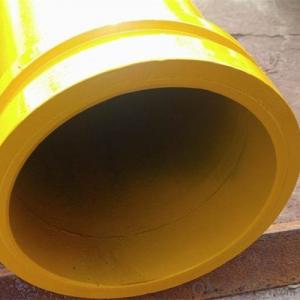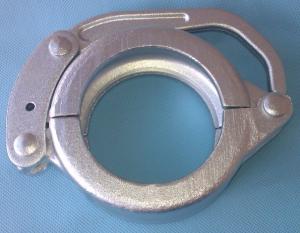DELIVERY CYLINDER(SCHWING ) I.D.:DN230 CR. THICKNESS :0.25MM-0.3MM COLOR:WHITE LENGTH:2125MM
- Loading Port:
- Shanghai
- Payment Terms:
- TT OR LC
- Min Order Qty:
- 2 pc
- Supply Capability:
- 1000 pc/month
OKorder Service Pledge
Quality Product, Order Online Tracking, Timely Delivery
OKorder Financial Service
Credit Rating, Credit Services, Credit Purchasing
You Might Also Like
Packaging & Delivery
| Packaging Detail: | wooden case, seaworthy packing |
| Delivery Detail: | 15 days |
Specifications
Concrete Pump Delivery Cylinder DN230*2100
1. Capacity: 60,000~80,000cbm
2. Size: DN180, DN200, DN230..
4. Brand: PM, Sany,ZM
Concrete Pump Delivery Cylinder DN230*2100
1. Material: C45
2. quenching and tempering to improve the hardness to HB241-280
3. inner wall chrome thickness is 0.25-0.30mm, hardness HV820-900.
4. Brand: SCHWING, PM, SANY, KYOKUTO, CIFA
5. Capacity: 60,000~80,000cbm
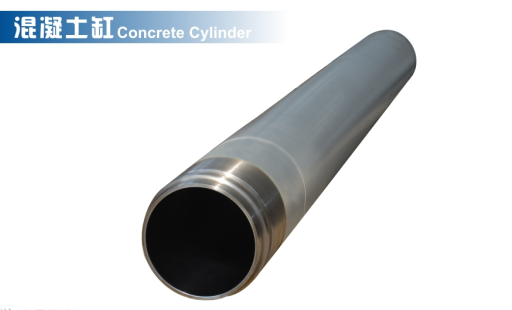
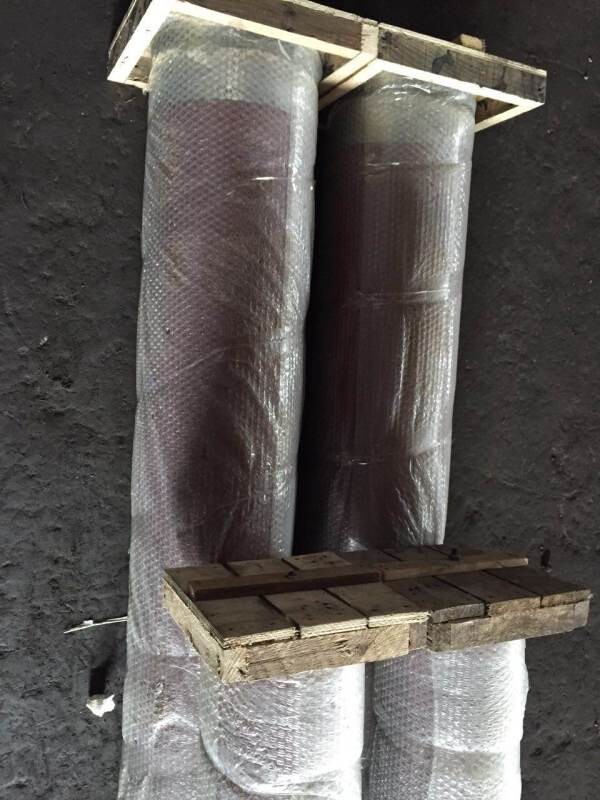

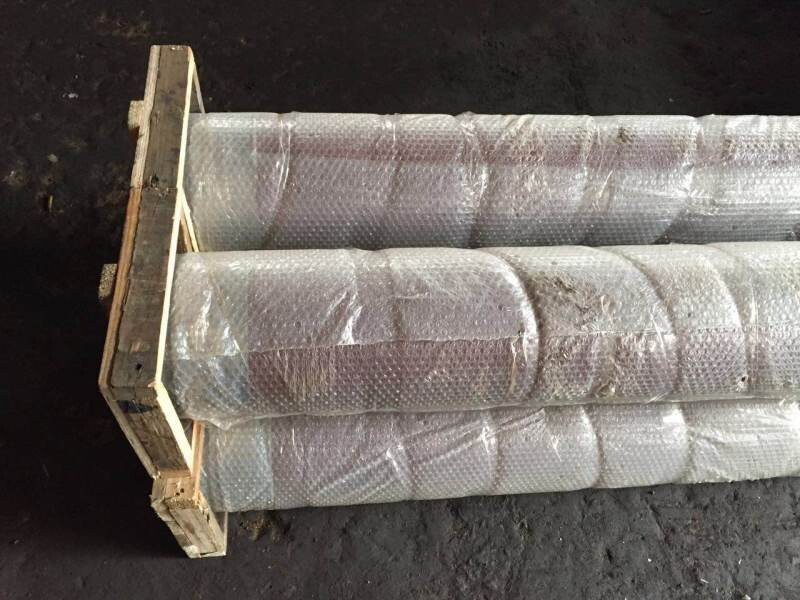
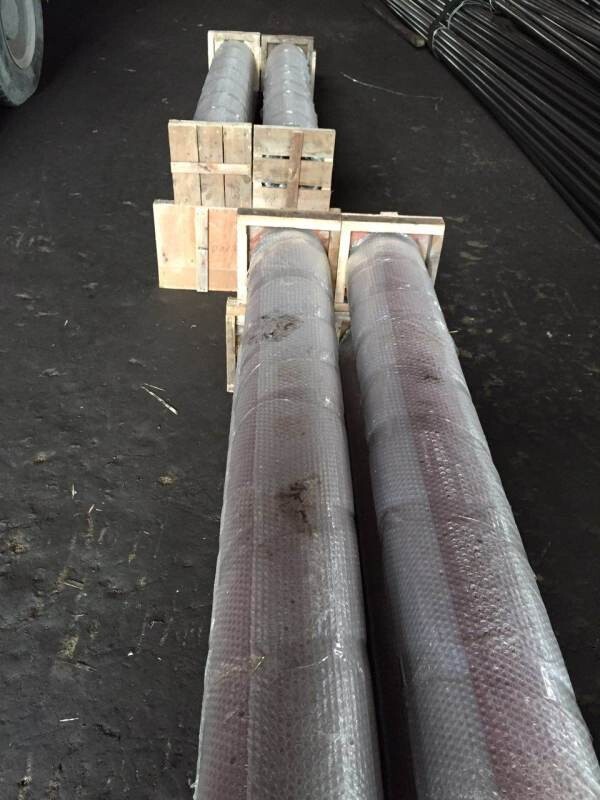
- Q: What are the different types of concrete pump wear rings?
- There are several different types of concrete pump wear rings that are commonly used in the construction industry. The most common types include: 1. Metallic Wear Rings: These wear rings are typically made of hardened steel or stainless steel. They are highly durable and can withstand the abrasive nature of concrete. Metallic wear rings are designed to be long-lasting and provide excellent wear resistance. 2. Polyurethane Wear Rings: Polyurethane wear rings are made from a high-performance polymer material. They are known for their exceptional resistance to abrasion, impact, and chemical exposure. Polyurethane wear rings are often preferred for their flexibility and ability to provide a tight seal, reducing leakage and improving pump performance. 3. Ceramic Wear Rings: Ceramic wear rings are made from a high-density ceramic material, such as alumina or zirconia. They are extremely hard and have excellent resistance to wear and corrosion. Ceramic wear rings are commonly used in high-pressure applications where there is a need for superior durability and performance. 4. Composite Wear Rings: Composite wear rings are made by combining different materials, such as metal and polymer, to create a hybrid material. These wear rings offer the advantages of both materials, such as the strength of metal and the flexibility of polymers. Composite wear rings are often used in applications where a balance between durability and flexibility is required. Each type of wear ring has its own unique advantages and considerations. The choice of wear ring depends on various factors, such as the specific application, operating conditions, and budget constraints. It is important to consult with experts or manufacturers to determine the most suitable wear ring for a concrete pump.
- Q: Are there any specific guidelines for the installation of pistons or cylinders in concrete pump spare parts?
- Yes, there are specific guidelines for the installation of pistons or cylinders in concrete pump spare parts. These guidelines are important to ensure proper functioning and longevity of the equipment. 1. Clean and inspect: Before installing pistons or cylinders, it is crucial to thoroughly clean and inspect them for any damage or defects. Any debris or contaminants should be removed to prevent potential issues during operation. 2. Lubrication: Apply a suitable lubricant to the piston or cylinder to reduce friction and ensure smooth movement. This will also help in preventing wear and tear, enhancing the lifespan of the parts. 3. Alignment: Proper alignment of the piston or cylinder is essential. Ensure that the piston is aligned correctly with the cylinder bore to avoid any binding or excessive wear. This can be achieved by following the manufacturer's instructions or consulting a professional if necessary. 4. Torque specifications: It is important to tighten the bolts or fasteners according to the manufacturer's recommended torque specifications. Over-tightening or under-tightening can lead to problems such as leaks or mechanical failure. 5. Sealing: Use appropriate sealing materials, such as gaskets or O-rings, to ensure a proper seal between the piston and cylinder. This will prevent fluid leakage and maintain the efficiency of the equipment. 6. Testing: After installation, it is recommended to test the pistons or cylinders to ensure they are functioning correctly. This can involve performing a trial run or conducting pressure tests to check for any leaks or abnormalities. Following these guidelines will help ensure the proper installation of pistons or cylinders in concrete pump spare parts, leading to reliable and efficient operation of the equipment. It is always advisable to refer to the manufacturer's instructions or seek professional assistance if there are any doubts or concerns during the installation process.
- Q: How much is the pump for a month?
- In the mud, the price is about 25 yuan per square, according to my experience, more than 175000 points per month can pump 7000 yuan, totaling $
- Q: How often should hydraulic accumulator bladders be inspected or replaced in a concrete pump?
- Hydraulic accumulator bladders in a concrete pump should be inspected regularly, ideally every 6-12 months, to ensure they are in good condition and functioning properly. However, the frequency of replacement depends on various factors such as the pump's usage, operating conditions, and manufacturer's recommendations. It is best to consult the concrete pump's manual or reach out to the manufacturer for specific guidance on when to replace the bladders.
- Q: How often should hopper agitator shafts be inspected or replaced in a concrete pump?
- Hopper agitator shafts in a concrete pump should be regularly inspected and maintained to ensure optimal performance and prevent potential breakdowns. The frequency of inspection or replacement depends on several factors such as the usage and operating conditions of the pump. As a general guideline, it is recommended to inspect the hopper agitator shafts at least once every three to six months. During the inspection, the shafts should be checked for any signs of wear, damage, or misalignment. If any issues are detected, appropriate measures should be taken, such as lubrication, realignment, or replacement of damaged parts. However, it is important to note that the frequency of inspection may vary depending on the intensity of use, the type of materials being pumped, and the overall condition of the pump. For instance, if the pump is subjected to heavy-duty or continuous operation, it may be necessary to inspect the agitator shafts more frequently, such as on a monthly basis. Regular maintenance and inspection of hopper agitator shafts not only ensure the smooth operation of the concrete pump but also extend the lifespan of the equipment. Timely detection and resolution of any issues can prevent costly repairs or downtime in the future. Additionally, following the manufacturer's recommendations and guidelines for maintenance can help optimize the performance and reliability of the concrete pump.
- Q: How often should hopper cylinder seals be replaced in a concrete pump?
- Hopper cylinder seals in a concrete pump should be replaced as soon as signs of wear or damage are observed. Regular inspection and maintenance can help identify the need for replacement, but the frequency ultimately depends on factors like usage, environmental conditions, and the quality of the seals. It is recommended to follow the manufacturer's guidelines and consult with professionals to determine the appropriate replacement schedule for hopper cylinder seals in a concrete pump.
- Q: Can I get spare parts for concrete pump wear plates and cutting rings?
- Absolutely, spare parts for concrete pump wear plates and cutting rings are readily available. These components are crucial for the flawless functioning and optimal performance of a concrete pump. Numerous manufacturers and suppliers specialize in offering spare parts exclusively for concrete pumps, encompassing wear plates and cutting rings. You have the option to directly approach these suppliers or manufacturers to inquire about the availability and pricing of these spare parts. Moreover, there are also online platforms and marketplaces where an extensive assortment of spare parts for various concrete pump models can be found. It is always advisable to ensure the purchase of genuine and top-notch spare parts to ensure the durability and effectiveness of your concrete pump.
- Q: What is the function of a concrete pump hydraulic motor?
- The function of a concrete pump hydraulic motor is to provide the necessary power and motion to operate the pumping mechanism of the concrete pump.
- Q: What is the purpose of a concrete pump piston?
- The purpose of a concrete pump piston is to provide the necessary pressure to push the concrete mixture from the hopper into the delivery pipeline. The piston is responsible for generating the force required to propel the concrete through the system, effectively transporting it to its intended destination. This is achieved by the reciprocating motion of the piston, which creates suction on one side and pressure on the other, enabling the concrete to be pushed forward. Overall, the concrete pump piston plays a crucial role in facilitating the efficient and continuous movement of concrete, making it an essential component in construction projects that require the precise and timely placement of concrete.
- Q: How do I properly maintain and replace wear plates in concrete pump spare parts?
- Achieving optimal performance and durability for your equipment relies heavily on the proper maintenance and replacement of wear plates in concrete pump spare parts. To ensure that your wear plates are adequately maintained and replaced, the following steps can be taken: 1. Conduct regular inspections: It is crucial to regularly inspect the wear plates in your concrete pump spare parts in order to identify any signs of wear or damage. Look for visible indications such as cracks, excessive wear, or deterioration. 2. Thoroughly clean the area: Prior to replacing the wear plates, it is essential to thoroughly clean the surrounding area. Remove any debris, dirt, or hardened concrete that may be present. Utilize a pressure washer or wire brush to effectively clean the surface. 3. Measure the thickness of wear plates: Utilize a precision measuring tool to determine the thickness of the wear plates. Compare the current thickness with the manufacturer's recommended specifications to determine if replacement is necessary. If the wear plates are below the recommended thickness, replacement is required. 4. Remove the old wear plates: Carefully remove the old wear plates using the appropriate tools. Take note of their positions and any alignment marks to ensure proper installation of the new plates. 5. Prepare the new wear plates: Prior to installing the new wear plates, verify that they are the correct size and meet the required specifications for your concrete pump. Inspect the new plates for any defects or damage before proceeding. 6. Apply lubrication: Apply a thin layer of lubricant or anti-seize compound to the mating surface of the new wear plates. This will aid in preventing corrosion and facilitate future replacements. 7. Install the new wear plates: Position the new wear plates accurately, aligning them with any reference marks or indicators. Secure them tightly using suitable bolts or fasteners, taking care not to overtighten. 8. Test and check alignment: After installing the new wear plates, perform a test run of the concrete pump to ensure proper functionality. Check for any leaks, uncommon vibrations, or misalignments. If any issues are detected, address them promptly. 9. Establish a regular maintenance schedule: To prevent premature wear and damage to the wear plates, create a routine maintenance schedule. This may involve cleaning, lubricating, and inspecting the wear plates at specified intervals or after a certain number of operational hours. By adhering to these steps and adopting a proactive approach to wear plate maintenance and replacement, you can guarantee the seamless operation and extended lifespan of your concrete pump spare parts.
Send your message to us
DELIVERY CYLINDER(SCHWING ) I.D.:DN230 CR. THICKNESS :0.25MM-0.3MM COLOR:WHITE LENGTH:2125MM
- Loading Port:
- Shanghai
- Payment Terms:
- TT OR LC
- Min Order Qty:
- 2 pc
- Supply Capability:
- 1000 pc/month
OKorder Service Pledge
Quality Product, Order Online Tracking, Timely Delivery
OKorder Financial Service
Credit Rating, Credit Services, Credit Purchasing
Similar products
Hot products
Hot Searches
Related keywords
